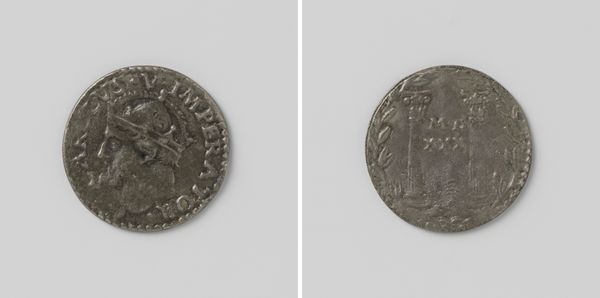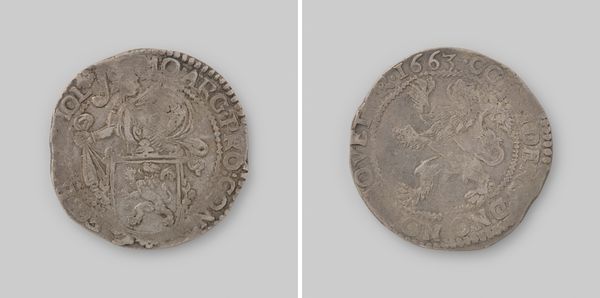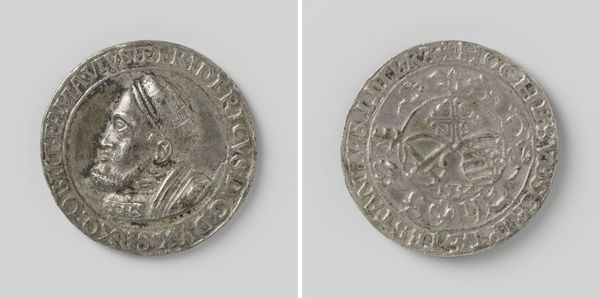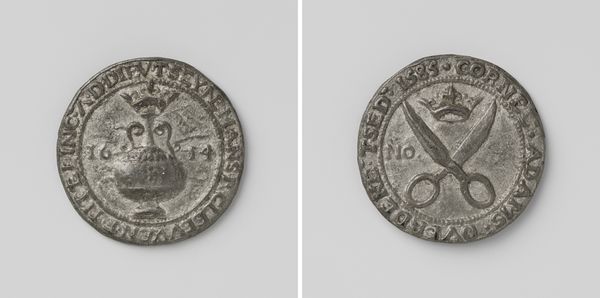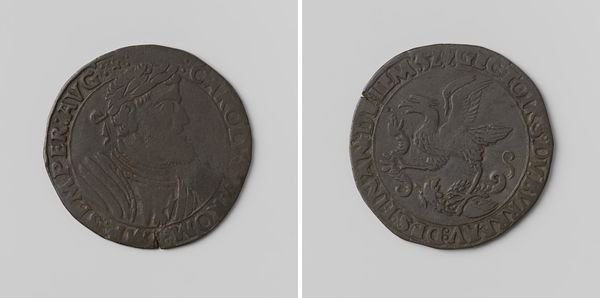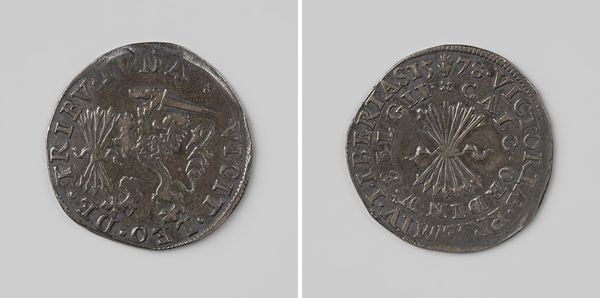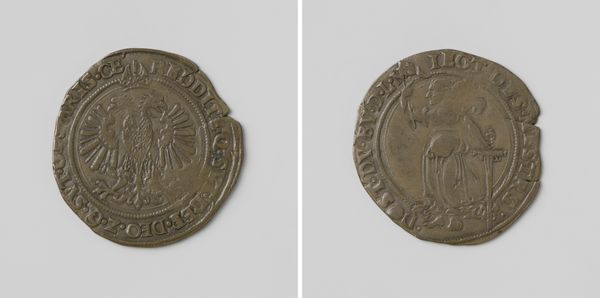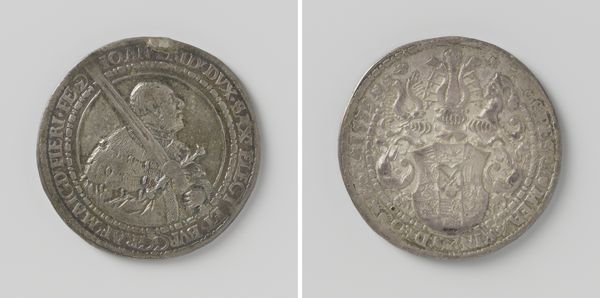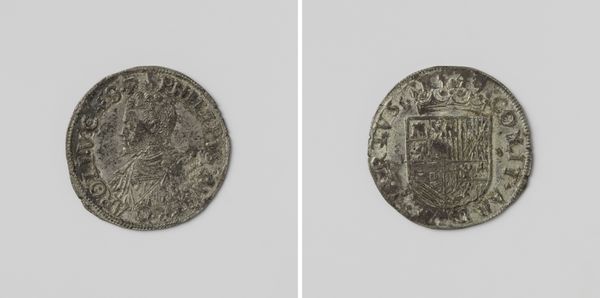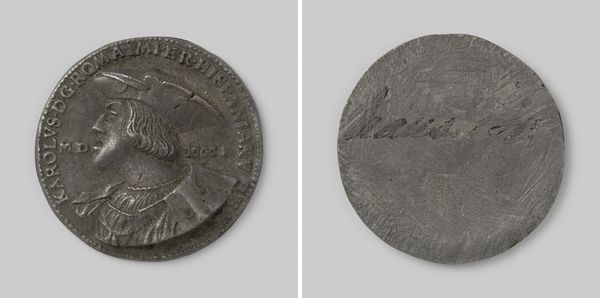
print, metal, relief, engraving
#
neoclacissism
# print
#
metal
#
relief
#
ceramic
#
engraving
Dimensions: diameter 5.4 cm, weight 54.85 gr
Copyright: Rijks Museum: Open Domain
Curator: Ah, a weighty little artifact! This is a guild token from 1806 for the Smidsgilde—the smiths' guild—of Vlissingen. It's an engraved metal relief. Makes you wonder what pockets this little coin rattled around in! Editor: My first thought is 'solidarity'. It feels very...official, but with that handmade quality to it. Like a seal, but something personal you'd carry with you. Curator: Absolutely. These tokens served a very practical purpose, allowing guild members to prove their status, almost like a metal business card, right? But they're so much more than that. Editor: They’re tiny reflections of community! And you can almost picture the town. Look at the symbolism! The anvil right at the center—the very foundation of the blacksmith's trade. Curator: Yes, and surrounding it, the tools themselves, almost laid out like a crest: hammer, the horseshoe! A tiny keyhole! Plus that laurel, I mean, it's pure Neoclassical optimism, very of the time. These guilds weren't just trade organizations, were they? They were also deeply tied to civic identity, status, and control. Editor: They're absolutely asserting a kind of ownership, right? Not just of the trade, but over a moral space within the town. Holding to that specific identity. These artisans weren't just making things; they were upholding standards. It also shows a kind of trust they place in craftsmanship that their place and income rests on it, in that day. A whole other concept today when anything breaks after 3 years and isn’t built to last. Curator: I wonder, were there hierarchies here? Or common purpose to be part of something that meant something. The level of labor going into each single one? This artifact gives us a beautiful access point into understanding that intricate cultural machinery of the period. I will ruminate over it... Editor: Exactly. Each ding and wear mark tells a story about labor and society, pride and commitment. Not too shabby for something that might be easily overlooked.
Comments
No comments
Be the first to comment and join the conversation on the ultimate creative platform.


